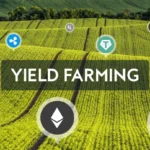The internet has gone through major transformations since we first heard that dial-up tone. We’ve journeyed from a simple, static web to the dynamic, social internet we use every day. Now, we’re in the middle of another profound shift, one that promises to change our relationship with the digital world entirely.
To understand where we’re going, we need to understand where we’ve been. Let’s break down the evolution of the web and the key differences between the internet we use today (Web2) and the one that’s emerging (Web3).
- Web1 (The “Read-Only” Internet, ~1990-2004): Think of this as a giant digital library. You could go online to read information from static websites, but you couldn’t really interact with it or create your own content. It was a one-way street.
- Web2 (The “Read-Write” Internet, ~2004-Present): This is the internet of social media and user-generated content. Platforms like Facebook, Google, X (formerly Twitter), and YouTube made it easy for anyone to create and share content. It became a two-way street, but there was a catch: the platforms owned the road and all the data traveling on it.
- Web3 (The “Read-Write-Own” Internet, Emerging Now): This is the next evolution. It takes the interactive nature of Web2 and adds a crucial new layer: ownership. Powered by blockchain technology, Web3 aims to take the control held by giant corporations and distribute it among its users.
But what does this mean in practice? Let’s compare them side-by-side.
1. The Architecture: A Centralized City vs. a Distributed Network
This is the most fundamental difference.
- Web2 is Centralized. Imagine a city where one single company owns the power plant, the water supply, and all the major roads. All data and applications live on servers owned by companies like Google, Amazon (AWS), and Meta. This makes them efficient but also creates single points of failure and control. If they decide to shut a service down, it’s gone.
- Web3 is Decentralized. Now, imagine a city with a distributed power grid of solar panels on every house, community wells, and public roads maintained by the community. This is Web3. Applications run on a peer-to-peer network of computers (a blockchain) that isn’t owned by any single entity. This makes the network incredibly resilient and censorship-resistant.
2. Data & Identity: Corporate ID Cards vs. Your Own Passport
How your identity is managed online changes completely.
- In Web2, your identity is owned by corporations. You have a Google account, an Apple ID, a Facebook profile. Each platform gives you a separate “ID card” that only works in their store. They own that identity and all the data associated with it. You can’t take your Facebook friends and reputation over to X.
- In Web3, you own your identity. Your identity is your crypto wallet (like MetaMask or Phantom). Think of it as your own personal digital passport. You control it, and you choose to present it to different DApps (Decentralized Applications) to interact with them. When you leave, you take your passport and all its history with you.
3. The Business Model: Advertising vs. Ownership
How value is created and distributed is radically different.
- Web2 runs on advertising. You get to use platforms for “free” because the real customers are the advertisers. Your attention, your clicks, and your personal data are the products being packaged and sold. You are the product.
- Web3 runs on an ownership economy. Instead of relying on ads, value is exchanged directly between participants. Users and creators can own a piece of the applications they use through tokens. These tokens can represent a stake in the project, voting rights, or access to features. The value is shared among the people who build and use the service, not extracted by a powerful middleman. You are a stakeholder.
4. Control & Permissions: A Private Garden vs. a Public Park
Who gets to make the rules?
- Web2 is permissioned. Think of it as a private, gated garden. The owner decides who can enter, what they can do inside, and can kick anyone out for any reason. They can change the rules at any time without warning (like when Twitter cut off access for third-party apps).
- Web3 is permissionless. Think of it as a true public park. Anyone can enter and anyone can build something new in it, as long as they abide by the transparent and publicly visible rules (the code of the smart contracts). No single entity can arbitrarily change the rules or deny you access.
Summary: Web2 vs. Web3 at a Glance
| Concept | Web2 (The Current Internet) | Web3 (The Emerging Internet) |
| Architecture | Centralized (servers owned by companies) | Decentralized (runs on a peer-to-peer blockchain) |
| Identity | Corporate-owned (e.g., Google/Facebook login) | User-owned (via crypto wallets) |
| Business Model | Advertising-based (“You are the product”) | Ownership-based (“You are a stakeholder”) |
| Control | Permissioned (platforms control access) | Permissionless (open to everyone) |
| Key Technology | Mobile, Social Media, Cloud Computing | Blockchain, Smart Contracts, Cryptocurrency |
Final Thoughts
The transition from Web2 to Web3 won’t happen overnight. For the foreseeable future, these two versions of the internet will coexist and even intertwine.
However, the principles of Web3—decentralization, user ownership, and transparency—are incredibly powerful. They represent a fundamental shift towards building a more equitable, open, and user-centric digital world. It’s more than just a technological upgrade; it’s a movement to redefine who holds the power online.
What part of the Web3 vision are you most excited about? Share your thoughts in the comments below!





